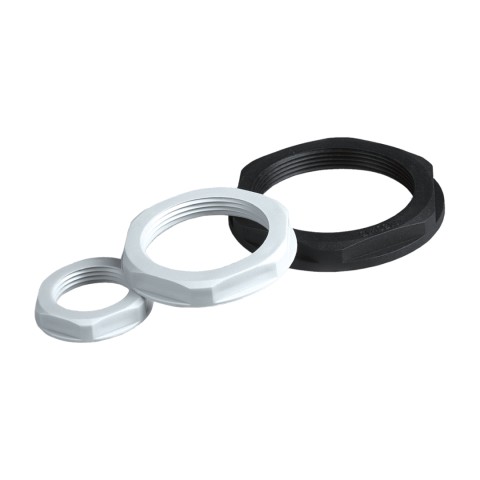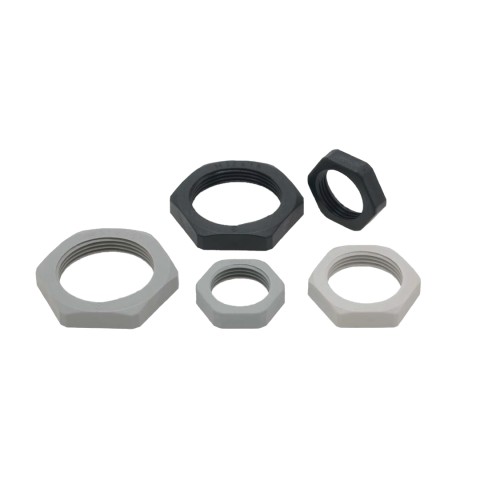Plastic, Metal, and EMC Counternuts
Cable gland counternuts—available in plastic, metal, and EMC variants—are essential accessories used to securely fasten cable glands, ensuring a reliable and safe connection between cables and enclosures. These components provide strain relief, prevent loosening under vibration, and protect the integrity of the electrical system.
Technical Specifications:
Material Options:
- Nickel-Plated Brass: Known for its excellent corrosion resistance and high mechanical strength, ideal for industrial environments requiring durability.
- Plastic (Polyamide - PA): A lightweight and cost-effective alternative, offering reliable performance in less demanding environments. Plastic counternuts are UV-resistant, making them ideal for outdoor applications.
- Stainless Steel (EMC): Designed to provide electromagnetic compatibility (EMC) shielding, these variants offer superior protection in environments with high levels of electromagnetic interference (EMI), ensuring uninterrupted signal integrity.
Temperature Resistance:
- Plastic Counternuts: Suitable for operating temperatures between -40°C and +100°C, making them appropriate for a wide range of environments.
- Metal Counternuts: Designed to withstand temperatures up to +200°C, ideal for high-temperature industrial applications.
- EMC Counternuts: Built with robust stainless steel, these couplers maintain shielding performance across a broad temperature spectrum typical of high-EMI applications.
Applications:
- Industrial Automation: Providing secure cable connections in control panels, machinery, and robotic systems.
- Telecommunications: Ensuring high-performance and durable connections for communication systems.
- Outdoor and Harsh Environments: Plastic counternuts are especially suitable for environments where UV resistance and lightweight materials are important.
- Marine and Offshore: Metal variants offer enhanced protection against corrosion, ideal for harsh marine environments.
- EMC-Sensitive Installations: EMC counternuts are ideal for applications requiring shielding from electromagnetic interference, such as data centers, renewable energy systems, and sensitive signal transmission infrastructure.







